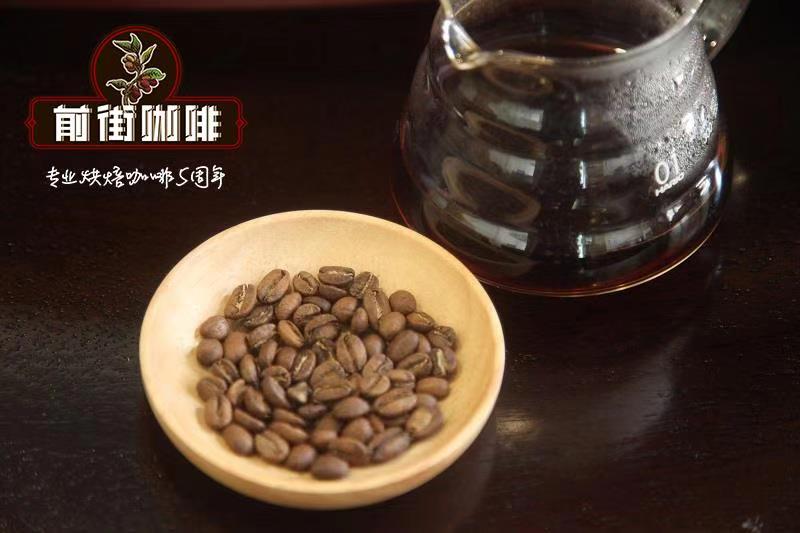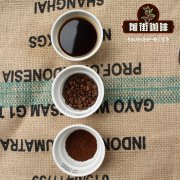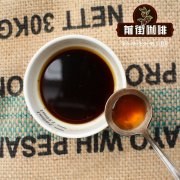Introduction to the flavor of El Salvador black honey coffee A brief introduction to the characteristics of El Salvador coffee

Professional coffee knowledge exchange more coffee bean information please follow the coffee workshop (Wechat official account cafe_style)
Introduction to Front Street Coffee-Salvadoran Coffee
El Salvador
Land area: 21000 square kilometers
Population: about 6.1 million
Climate: the whole year is divided into the rainy season from May to October and the dry season from November to April.
The history of coffee cultivation began in the 1840s when coffee seeds were introduced to El Salvador from the Caribbean islands. In 1979, affected by the aftermath of the Nicaraguan revolution, most of the coffee producing areas were abandoned and production dropped sharply. After entering the 1990s, coffee production began to recover. Under the influence of the war, the bourbon species has not been replaced by other varieties.
El Salvador is a small country in Central America. The land is made up of mountains, valleys, volcanoes, coastal plains and Madore Mountains, facing the Pacific Ocean. Among the coffee farms in China, Santa Ana Manor in the west is the largest coffee producing area. Coffee is also grown in Lalibertad in the middle and Ursulutan in the east.
Cultivation and variety
Coffee trees in El Salvador are all Arabica species, of which bourbon coffee accounts for 60%, is the most widely cultivated species. The more special coffee varieties in El Salvador are bourbon variants Pacas, Pacas and Margogype (elephant beans), which are the most famous local coffee varieties and are very popular in recent years. This kind of coffee has large grains and is suitable for growing in highlands. It smells like a tin pickup. At present, it is more popular than bourbon coffee.
Fragrance
El Salvador's highest-yielding bourbon coffee is characterized by a milder flavor and a chocolate-like mellow taste compared with Guatemalan small-grain coffee. Although Pacamara coffee tastes good, it has a sour aroma similar to that of iron pickup coffee.
Introduction to Qianjie Coffee-El Salvador Honey treatment of Wula Mountain
Honey treatment, called Honey Process or Miel Process, after hearing the name honey treatment, many people will think that this is a process of processing with honey, or processed coffee will have a honey flavor, in fact, honey treatment is the method of peeling off the pulp and drying the fruit with endocarp. Because in the process of drying, the water of the gel on the surface of the core will evaporate, so it becomes as sticky as honey, hence the name.
Raw bean analysis
| | bourbon |
Bourbon, the second species caused by the Typica mutation, is the oldest coffee variety in existence, and the green fruit appears bright red when it is ripe. Compared with the tin card species, the bourbon species has wider leaves and denser growth. although the seed setting is higher than the tin card, the harvest time is also 2 years, which is also a variety with less yield, but it has a high-quality taste, like the sour taste of red wine, and the aftertaste is sweet. Coffee bean particles are large in shape, uniform in size, uniform in color and shiny. In order to facilitate harvesting, farmers will trim coffee trees to no more than 150 centimeters.
The water content of raw beans is relatively low, SHB grade, general texture, smell has a hint of fermentation aroma.
END
Important Notice :
前街咖啡 FrontStreet Coffee has moved to new addredd:
FrontStreet Coffee Address: 315,Donghua East Road,GuangZhou
Tel:020 38364473
- Prev

Are Kenyan coffee beans expensive? what's the best coffee in Kenya?
Professional coffee knowledge exchange more coffee bean information please follow the coffee workshop (Wechat official account cafe_style) front street coffee introduction-Kenya Coffee Kenya coffee producing countries are full of confidence, not only Kenya coffee is rich in flavor: strong aroma, obvious acidity, especially Kenya coffee after the harvest, must be set up by the government of Kenya Coffee (Coffe)
- Next

How about El Salvador Coffee? El Salvador Bourbon Coffee Flavor Introduction
Professional coffee knowledge exchange More coffee bean information Please pay attention to coffee workshop (Weixin Official Accounts cafe_style) Front Street Coffee Introduction-El Salvador Coffee El Salvador [Climate Characteristics] Savanna climate Plain area belongs to tropical rain forest climate, mountain area belongs to subtropical forest climate. The annual average temperature is 25-28℃, the annual precipitation in mountainous areas is more than 1,800 mm, and that in coastal areas is about 1
Related
- Beginners will see the "Coffee pull flower" guide!
- What is the difference between ice blog purified milk and ordinary milk coffee?
- Why is the Philippines the largest producer of crops in Liberia?
- For coffee extraction, should the fine powder be retained?
- How does extracted espresso fill pressed powder? How much strength does it take to press the powder?
- How to make jasmine cold extract coffee? Is the jasmine + latte good?
- Will this little toy really make the coffee taste better? How does Lily Drip affect coffee extraction?
- Will the action of slapping the filter cup also affect coffee extraction?
- What's the difference between powder-to-water ratio and powder-to-liquid ratio?
- What is the Ethiopian local species? What does it have to do with Heirloom native species?

